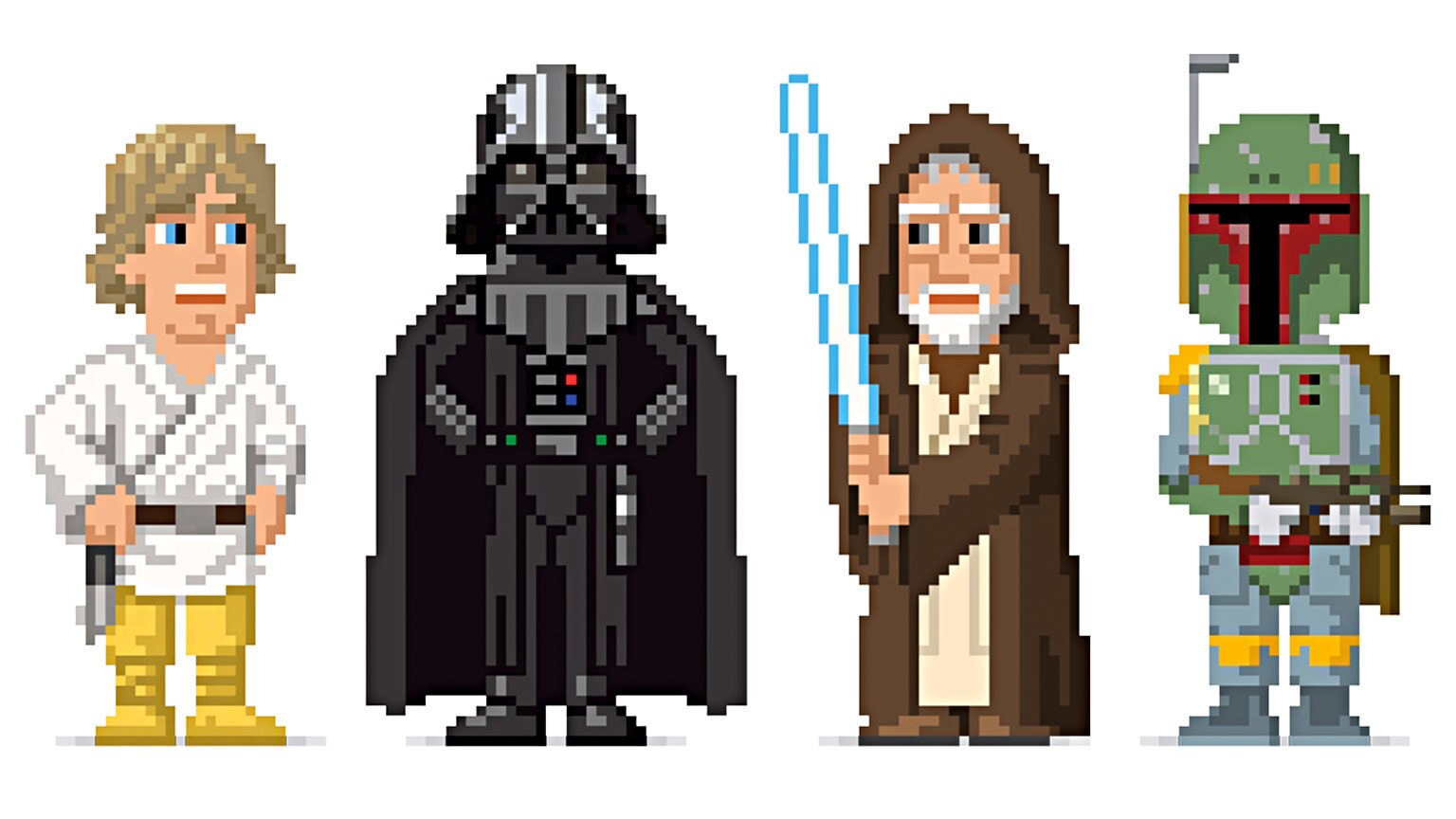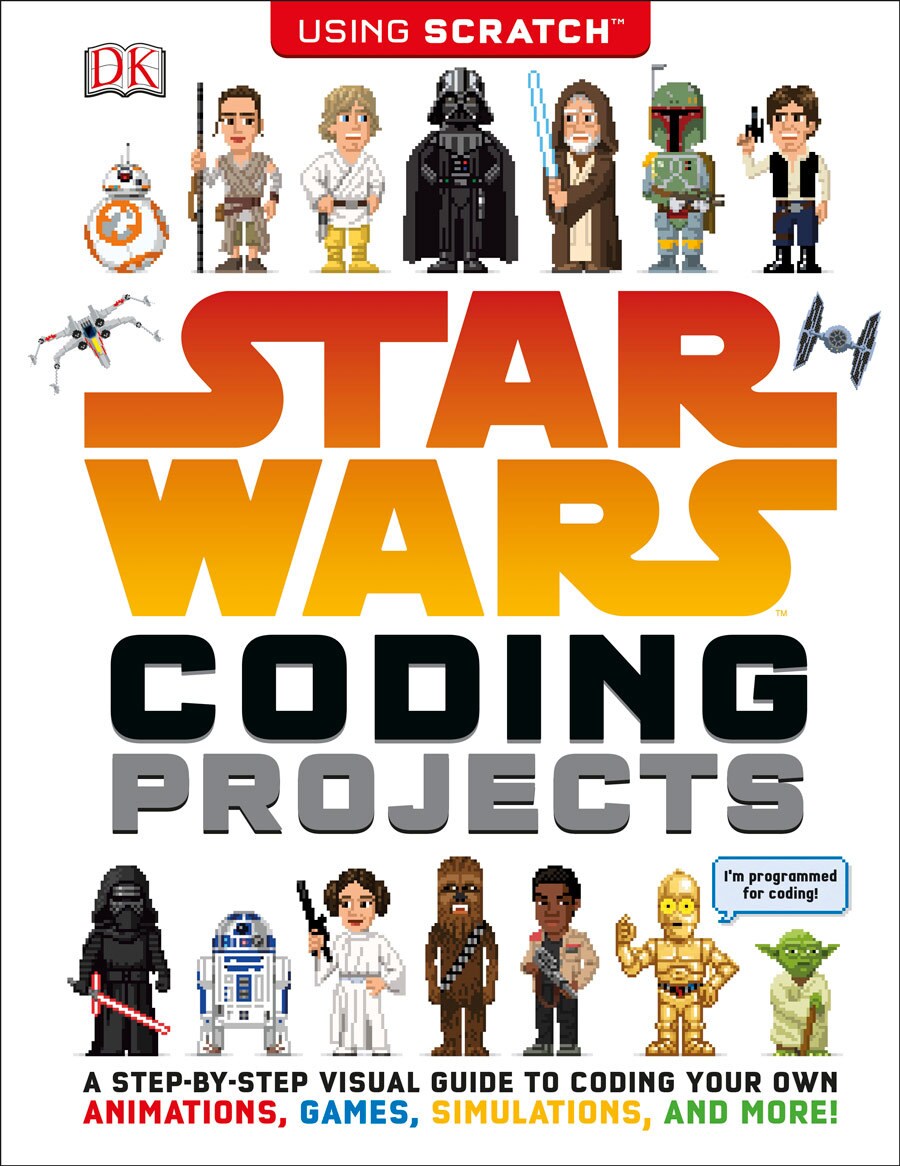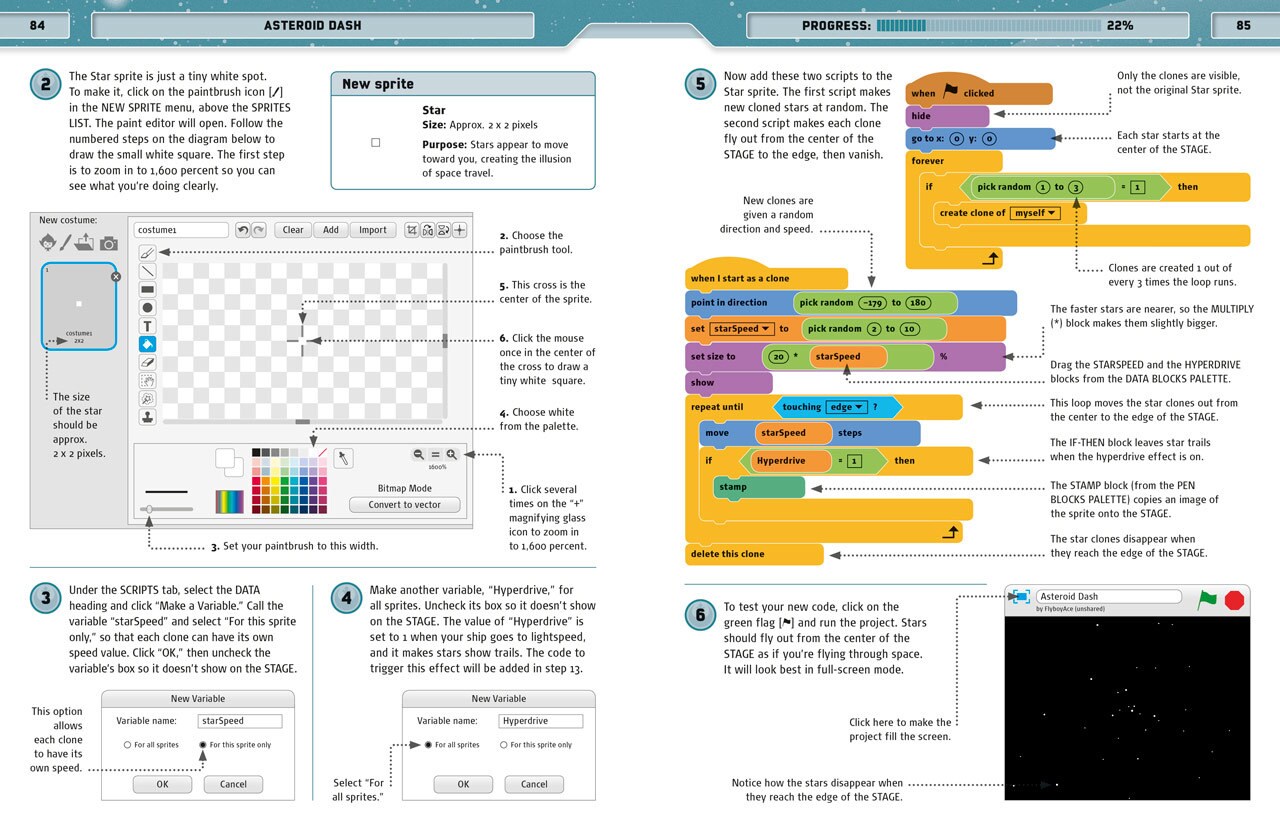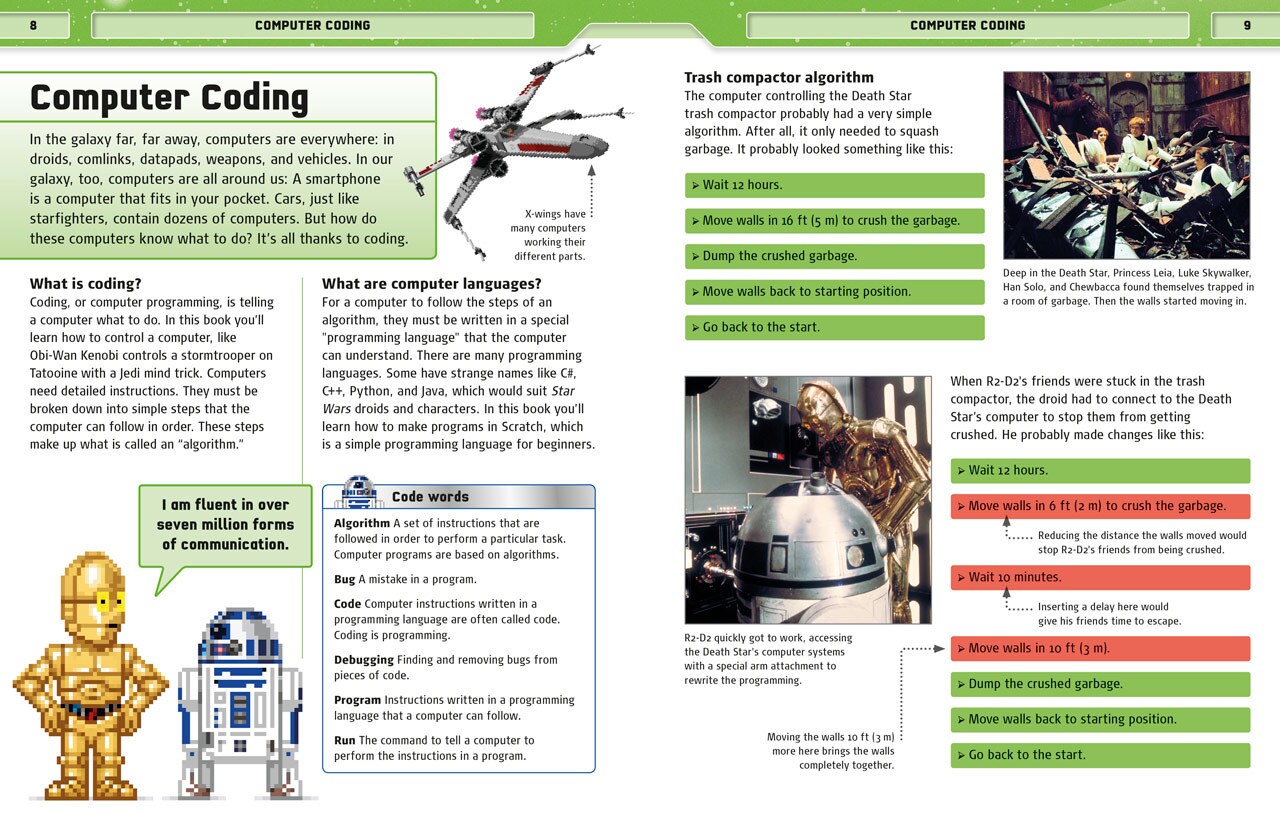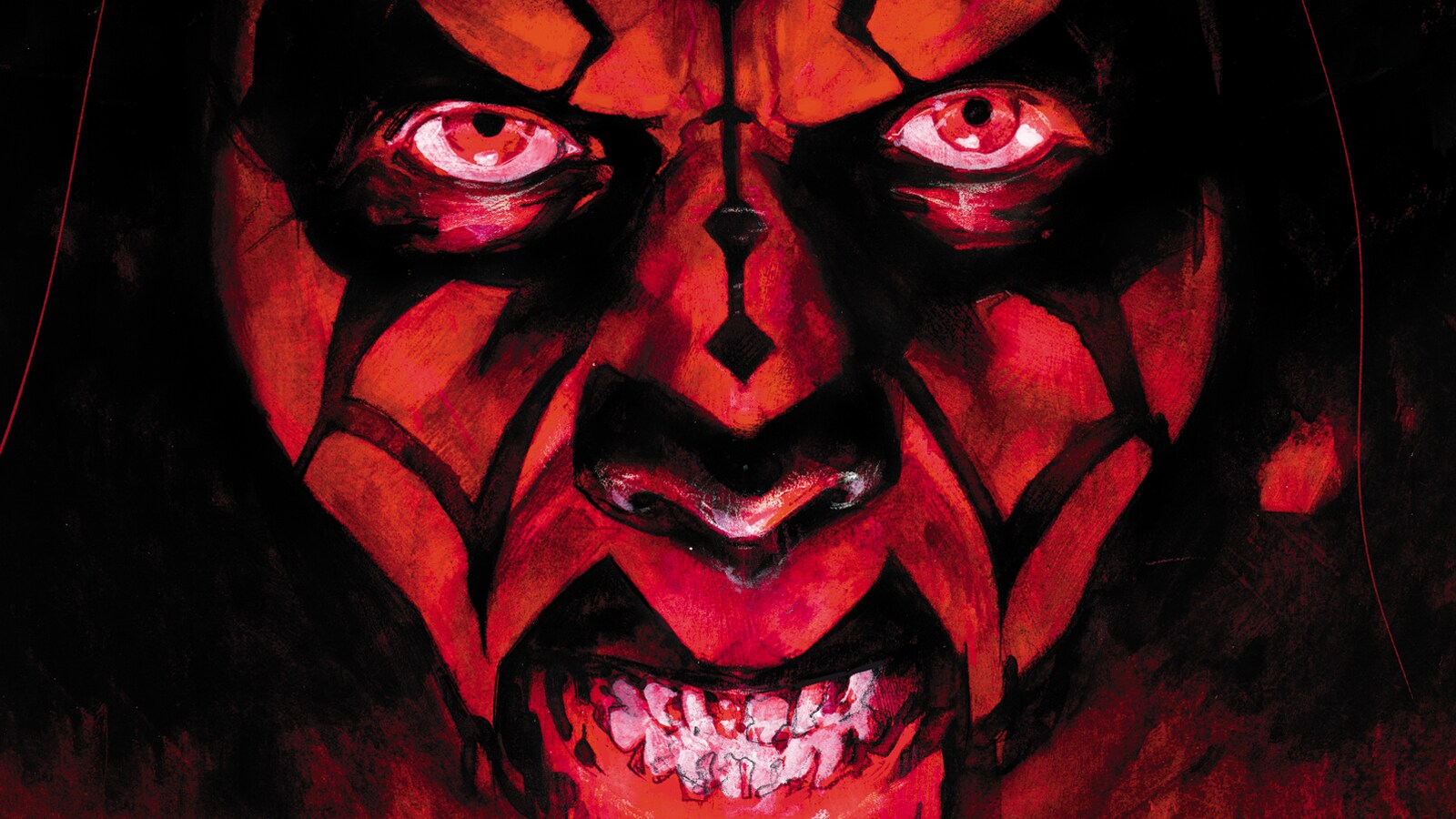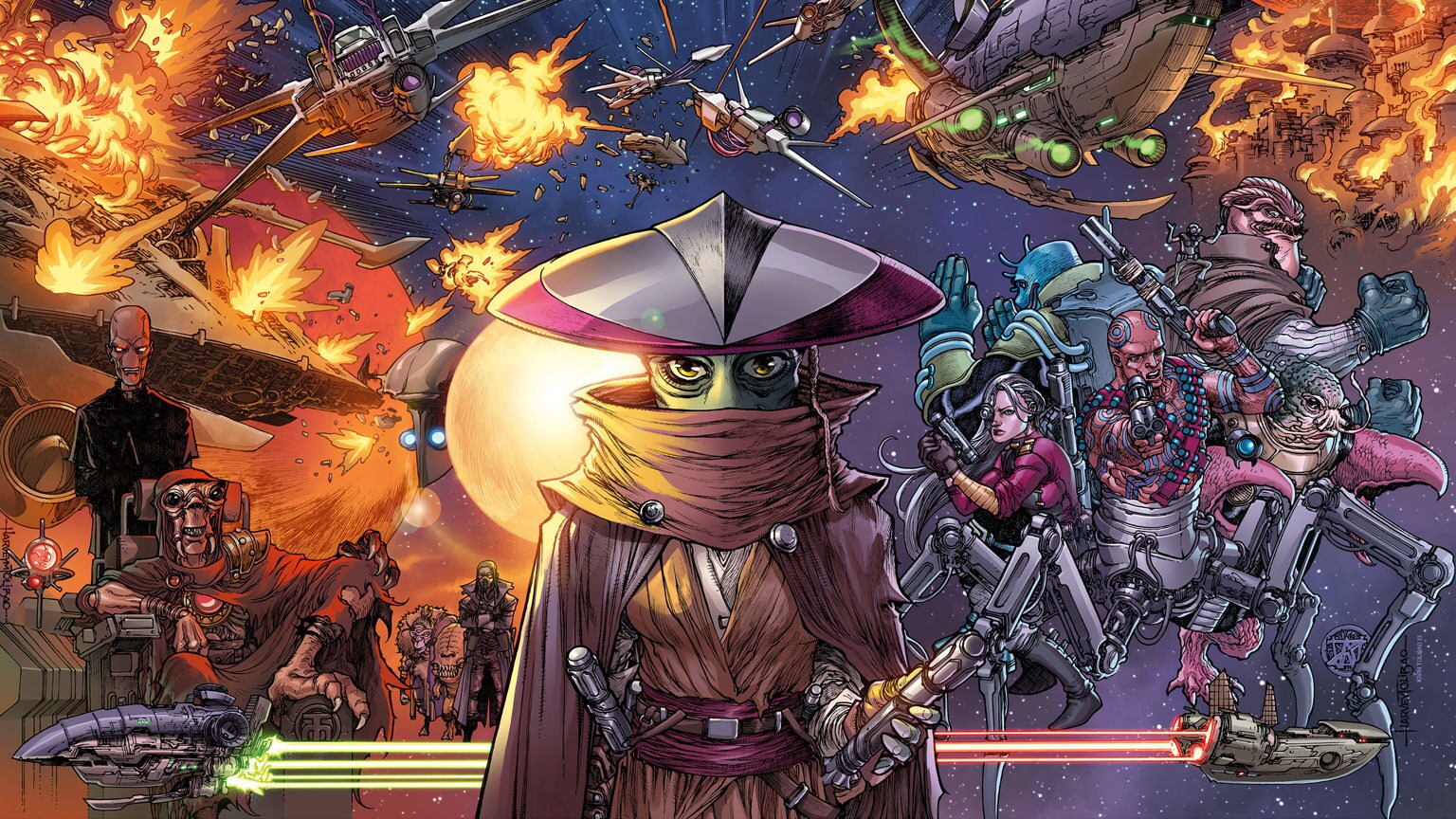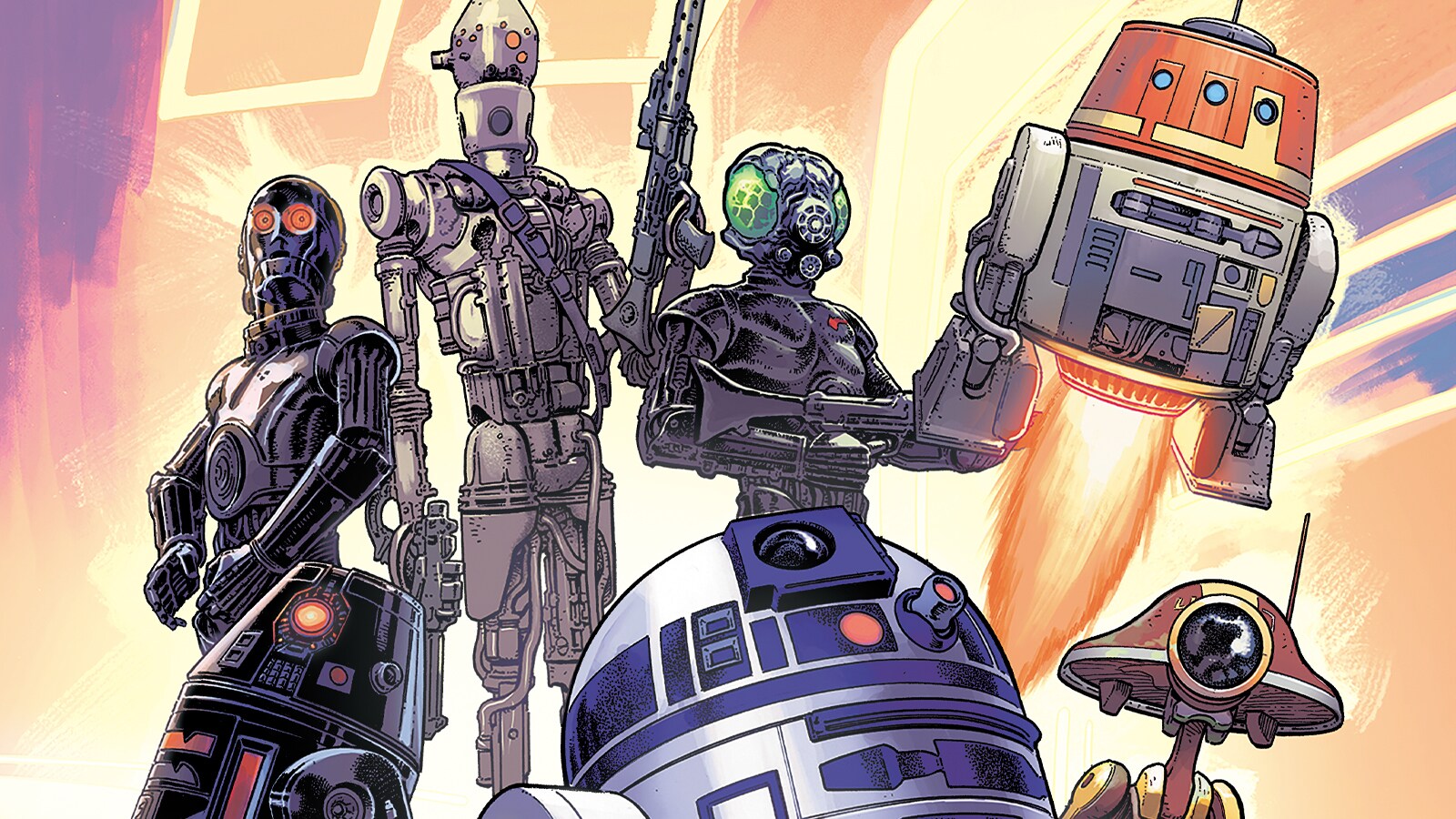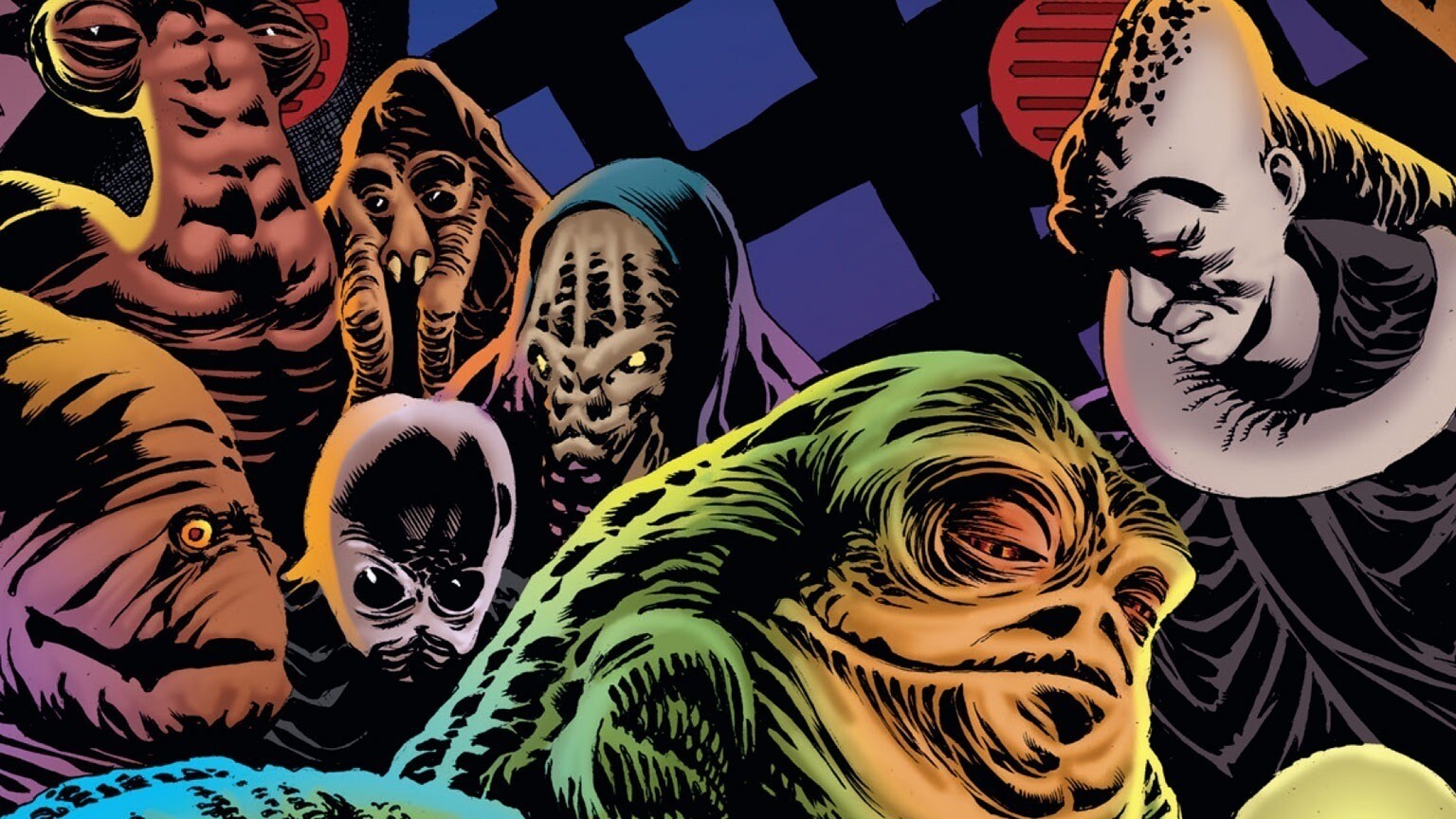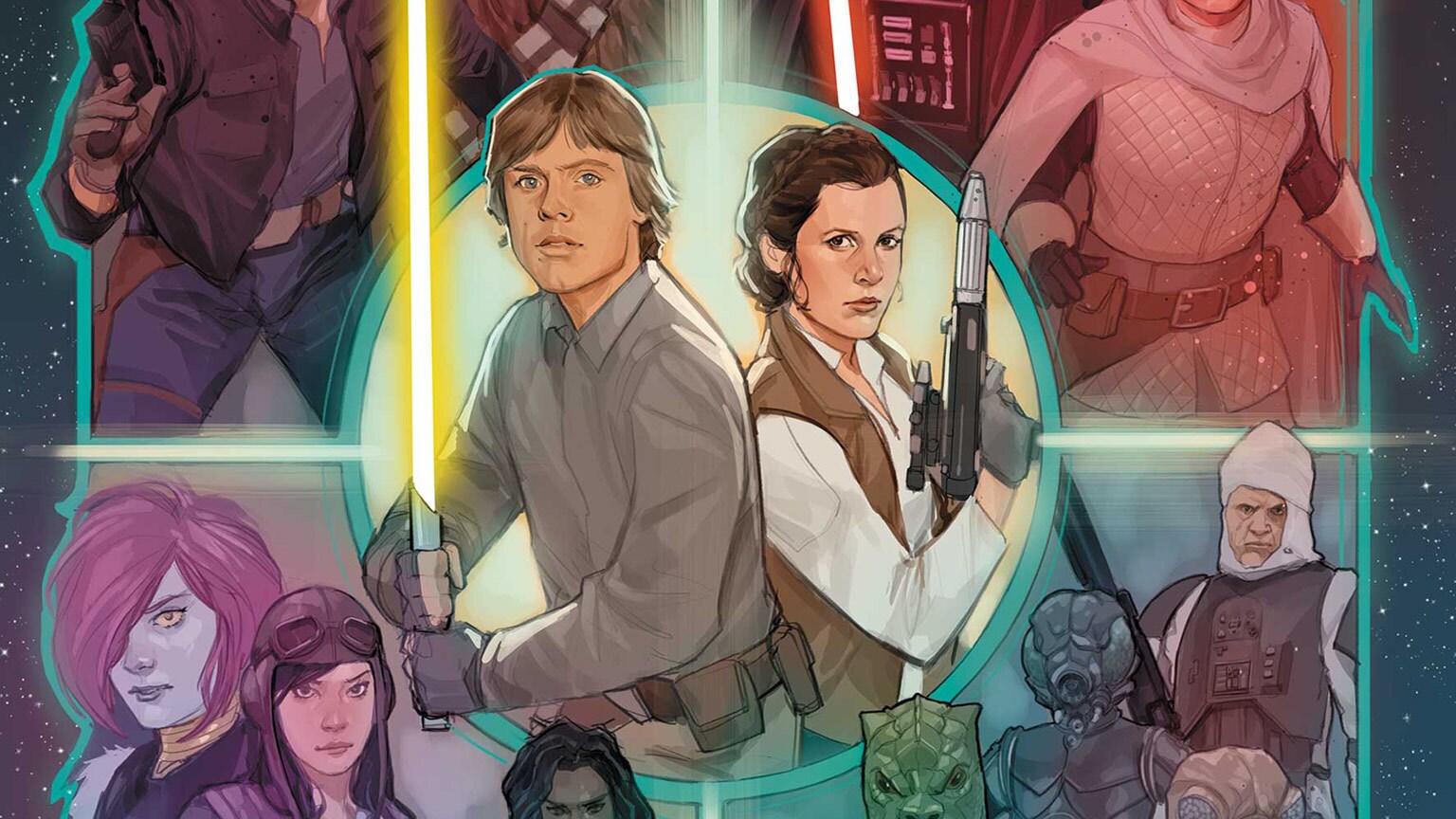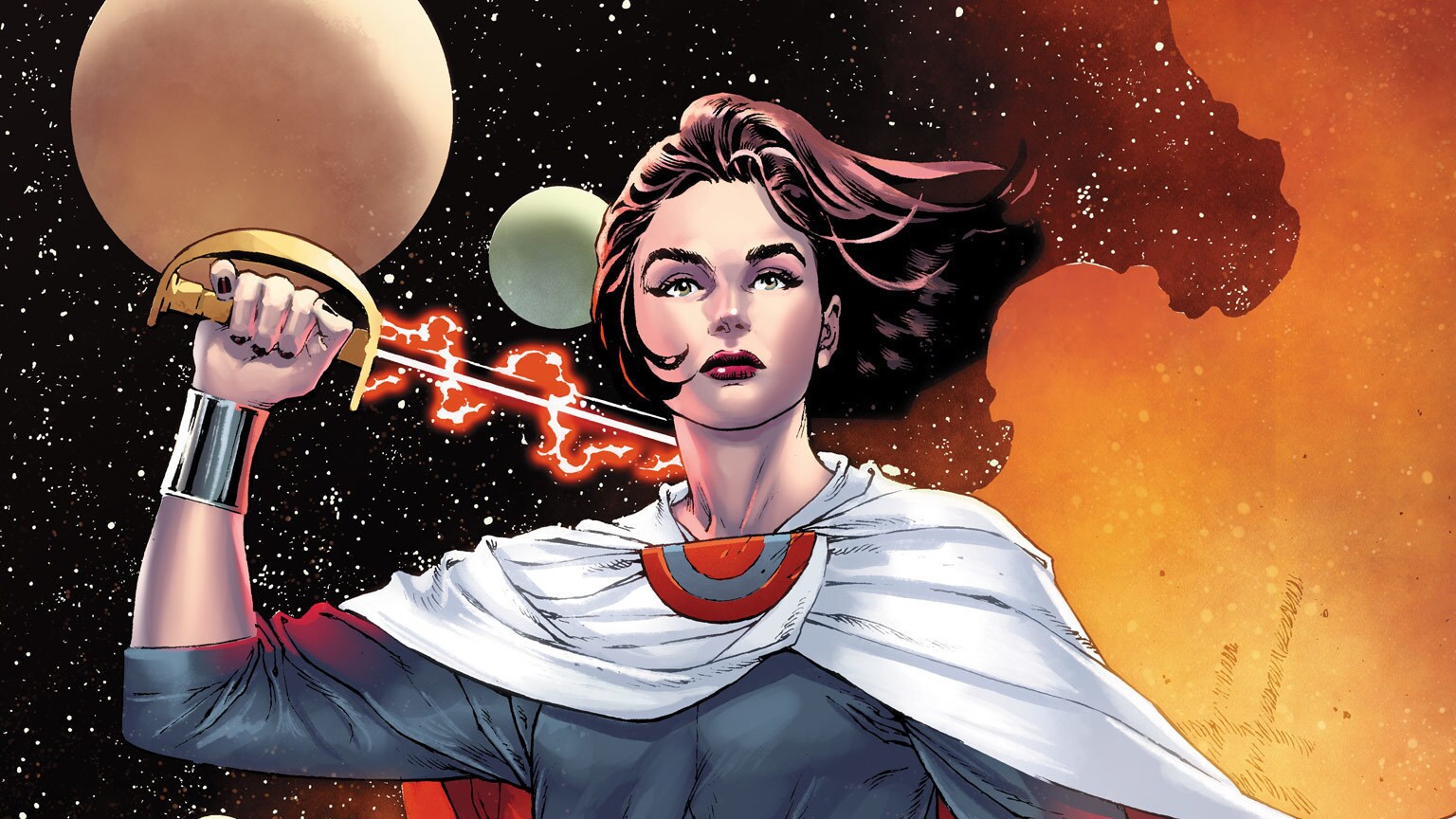Computers and Star Wars go hand-in-hand. Not only are computers part of the everyday lives of the folks in a galaxy far, far away, computers became a fixture of everyday lives here on Earth around the same time as Star Wars, and both have permeated our society and culture. Using computers to solve problems or have fun is something a person in any galaxy can learn, and what better way to learn the basics of creating computer code than by being introduced through the fun of Star Wars. Out this past October from DK Publishing, Star Wars Coding Projects combines Star Wars with the beginning coding language Scratch for creating fun projects, animations, and games. Written by Dr. Jon Woodcock, it features six fully-illustrated Scratch projects, with step-by-step instructions. After checking out some of the fun games that can be built from the instructions in this book back at San Diego Comic-Con, StarWars.com called up Kiki Prottsman, education program manager at code.org and writer of the foreword for Star Wars Coding Projects, to learn more about the book and why coding is important for everyone.
StarWars.com: What is Star Wars Coding Projects about?
Kiki Prottsman: As much as any coding book is about something, Star Wars Coding Projects is, on the surface, is about learning to code and learning those basic fundamental ideas. But really, more so than many of the coding books out there, Star Wars Coding Projects is about combining passion with expression. One of the reasons that this particular book is already tugging at so many heartstrings is because people already have that embedded passion for Star Wars.
The book is technically aimed for elementary schoolers. Several of these Scratch books by Jon Woodcock are targeted at that elementary/early middle school age range. I think Star Wars Coding Projects has a lot of lasting power as you go through into adulthood -- there’s certainly something novel about it. Even with the cartoony pixelated characters and simple text, it still feels very approachable for all ages. I think it really is geared toward the Star Wars fan as well as anybody who has that sci-fi blood running through their veins.
StarWars.com: What is Scratch? How easy is it to learn and master?
Kiki Prottsman: Scratch is a program, free on the Web. You can either play with it directly on the Web, or download a copy to your machine if your Internet connection isn’t so reliable. Scratch has been around for a long time. It’s a block-based interface for coding. It has a toolbox that has all the blocks you could need and it allows you to drag blocks of code over into your work area and build programs without having to having to worry about syntax and grammar. “How do I say this? How do I say that?” Everything is there for you and all you need to do is click it together into place.
It’s a first step, a program that shows you what’s possible, so that when you’re ready to start programming, you have already gotten experience with how statements combine and the types of things you can build. Scratch is really a novel programming language in that it was built for storytelling and self-expression, which is not true of many programming languages out there. Its primary purpose was not even education necessarily, but giving kids and students the ability to make something happen by playing around without very much background knowledge. It has a very movie-like quality, where the background is called the stage, and you can set the stage with all sorts of different things. Each character or sprite has different costumes, and you put the script into each sprite, so that each sprite knows what to say at certain points. It’s very theatrical, which lends itself very well to this medium and to Star Wars.
StarWars.com: How easy is it for folks to learn and to master Scratch?
Kiki Prottsman: It’s very simple! When I used to teach second graders, I would sit them down in front of the program and just tell them to mess around. At some point I would start to hear a cat meowing -- that’s one of the functions, a block that makes the cat meow. And you’d hear the cat meowing from all corners of the classroom, and that’s when I would know that they were ready to start learning about what they were going to do for the day. Really, it’s one of those things you can learn just by messing around and then you get a feeling of “Oh! I bet I can do this. How do I do this?” So the idea is that you would mess around with it for a bit, or if you can’t figure it out because you don’t know which block does what, you can go watch a 90-second YouTube video about that block, and then you know. From then on, your knowledge just builds and you don’t really need a teacher, just some natural curiosity.
StarWars.com: I think that is really powerful, to just explore on your own, and realize that “This does this. Let’s change it and see now what it does. Did it do the thing I wanted it to do or did it do something else? How do I keep going forward and adding cool new things?”
Kiki Prottsman: Absolutely! And as long as you don’t have a crippling fear of failure, and can just let yourself know that you’re going to do things wrong and then you learn from that, then the education from Scratch comes quickly.
StarWars.com: What are some of the cool experiences that Star Wars Coding Projects teaches readers to make?
Kiki Prottsman: I think one of the coolest is called "Use the Force!" where you are [like] a Jedi. Crystals, both blue and red, appear mysteriously on the screen and you have to move your training pod using “the Force” (really, using the webcam to track your motions) to try to collect the blue crystals, avoid all the red crystals. The book also has "Jetpack Adventure" which is more of a side-scrolling Flappy Bird-like game, where you are a bounty hunter flying through and avoiding obstacles in the air. These experiences are simple to make, which is good when you first are learning coding -- where you put in little energy and have maximum return. There’s a lot of stuff that deals with collision in these games where you try to make things happen or avoid certain obstacles and just have a good time playing with them.
StarWars.com: Why should people learn to code?
Kiki Prottsman: That’s not a hard-to-answer question at all! [Laughs] There are lots of reasons, and depending on who you are talking to, different styles of that will come out. I personally get on the coding bandwagon for two very big reasons. One is personal experience. I see that I have been much more successful in life because I have been able to build my own stuff, when it comes to coding. I’ve had several small businesses; I started a non-profit; and I have my own YouTube channel and these other elements of my life that I really really enjoy. And the reason I am able to do that is that I was able to create my own website, do my own coding, and make my own apps to make my life easier. If I would have to had paid somebody to do that for me, then that would have been an obstacle that was too great.
I think even more important was this idea of problem solving. Computer science challenges your problem solving abilities and strengthens them in a way that almost nothing else can. It’s easy for anyone to come across a project or a chunk of a project that no one else has attempted or not a mainstream number of people have attempted. So you’re facing these issues every single day, but you can’t just give up and ask someone else how they were able to fix the same issue. There is a level where you can ask others for help but there is also the level where you have to figure out the answer to this problem by yourself, without anybody teaching you, without anybody having shown you before. You have to take the problem apart, and look at its pieces, see how they go back together and come up with solutions. The ability to not get stopped by a problem but instead to dissect it, fix it, and then keep on tromping along -- that is the single biggest attractor to computer science, in my book.
When we have a world full of students who are learning how to do that in their very first years (kindergarten through third grade), then you’re getting a world of students who go through the entire rest of their lives not just throwing up their hands and saying “I don’t know” or “I quit” but instead, they are moving forward and saying “Let’s solve this problem” and “Let’s fix it. What’s it going to take?” When you have a community of people that can say, “What is this problem? Let’s fix it,” your entire community is better -- the place that you live continues to improve, instead of everybody thinking things are somebody else’s problem.
I tie these things together very heavily, and it might seem like a huge stretch, but I’ve noticed that with myself and the way I grew up and with my friends’ kids. Programmers’ kids tend to be amazingly persistent and amazing problem solvers. Put those two things together and success is inevitable, eventually. Failure is inevitable too, but we ignore that because failure is what teaches you and as long as you eventually get to the successes, the failures are just enhancements.
StarWars.com: They’re just stepping stones on the way.
Kiki Prottsman: Exactly.
StarWars.com: Wow. That was really, really cool.
Kiki Prottsman: So, you know, [Laughs] it is just a little helpful.
StarWars.com: How does Star Wars inspire future computer programmers?
Kiki Prottsman: Star Wars, as you’ve found out by now, is a microcosm of life in so many areas. Star Wars is also very much about taking up arms and not being afraid to be different and fighting for the things that you are passionate about, embracing failures and doing something even if you’re afraid of doing them. All of those things are very important in computer science. I think that students who get used to that mentality of “You can be the underdog and still come out on top” or “Even if everything is set up against you, you can still succeed.” I think those types of ideals are inherently important in computer science. That’s how the themes of Star Wars help computer science.
Star Wars, as a movie and a franchise, has helped computer science in so many ways because of its technology and as a source for inspiration for young people to play with robots, to look at technologies of the future, and figure out how they can help important causes. Even in making Star Wars itself, the special effects in the early movies were some of the first examples of using computer science in the theater. So there’s always been that natural connection.
StarWars.com: What is Hour of Code and how does Star Wars tie into it?
Kiki Prottsman: The Hour of Code happens during the second week of December every year. The idea is to encourage people to try just one hour of code. I think last year we had about 40 or 50 million students trying it. These people try an hour of code to get over some of the fear that coding is a difficult or boring thing. One of the applications that we have on the site [code.org] is a Star Wars hour of code. We have an hour-long tutorial and you can choose either to use blocks for elementary school students or use something based on Pencil code, which goes back and forth between blocks and actual JavaScript. It’s a great way to bridge the gap between what we’ve been talking about in Scratch and the more traditional kind of programming. These tutorials star R2-D2 and C-3PO trying to solve some challenges. Rey and Princess Leia also appear, encouraging the droids along, and BB-8, obviously, when Rey is around. You get to go through and complete these challenges and with the Star Wars ones, at the end, you get to create your own project using the droids, stormtroopers, rebel pilots and ships -- using just an hour’s worth of coding time.
StarWars.com: Wow! Just giving everyone a good taste -- this is how easy it is and how fun it is to code.
Kiki Prottsman: Absolutely. That’s what it’s meant for. All about showing you how much you can accomplish in a very easy and fun way in about an hour. It’s available at hourofcode.com/star-wars.
StarWars.com: Anything else you want to add on Star Wars Coding Projects?
Kiki Prottsman: Star Wars Coding Projects as a book is very, very well written. Jon Woodcock is very talented and the ideas behind it feels true to Star Wars. The book is fairly easy to follow along with, which can be very important when you’re first learning computer science because everything seems so foreign. To be able to go through and read and have visuals that express how to do something. This book caters to both the skimmer, who just wants to see what the blocks are, and also to the person who wants to read deeper and figure out why things are the way they are. It’s a very good choice for a beginning coder.
StarWars.com: This is all very exciting. Getting to play the Use the Force game at San Diego Comic-Con with you this past summer was a lot of fun, although I have no idea how I got such a high score on my first try when all my later tries were so much lower.
Kiki Prottsman: Coding is a funny thing. Being able to go in and see why things happen is only helpful so far because you can see why the code does what it does, but once the user gets involved, it’s all up in the air!
Star Wars Coding Projects is available in paperback from DK Publishing. Kiki Prottsman can be found online at Twitter @KIKIvsIT and YouTube.




